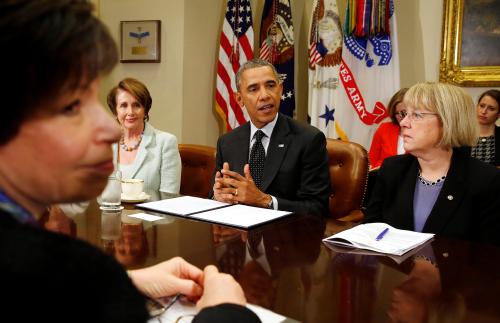Balancing work and home can be a struggle for many parents—above all for Black moms, who are more likely to be working a “double shift” of both paid and unpaid work.
The pandemic has sharpened many of these challenges as schools have closed, jobs have been reconfigured, and social distancing requirements have disrupted informal care networks. Faced with new trade-offs, many parents have had to make new arrangements, especially mothers exiting the labor market in large numbers.
Black mothers, however, are facing the toughest challenge. For one thing, Black (and Hispanic) children are more likely to live in school districts with online-only reopening plans. Black mothers are less able to turn to one of the following contingency plans families are using to manage childcare:
- juggle care with a partner;
- take a break from employment;
- work from home; or
- outsource childcare
As in so many other domains, the pandemic has acted as an x-ray of inequality, exposing many of the fractures that long predated the virus—including the particular stresses faced by Black mothers. Here we show why these four contingency plans are less available to Black mothers, and then outline directions for policy.
Contingency Plan #1: Juggle childcare with a partner
Some married and cohabitating parents are adapting their schedules to split childcare responsibilities. But nearly one quarter of mothers don’t have a spouse or live-in partner to fall back on. And Black moms are significantly more likely to fall in this category—nearly half of Black kids are raised by solo mothers, compared to 17% of all other kids.
Contingency Plan #2: Take time off paid work
Women are losing more jobs amidst the pandemic, but they’re also more likely to choose to stay home with their kids when childcare isn’t available. Of those not working ages 24-44, mothers are three times more likely than fathers to cite school and childcare facility closure as the main reason they are not working.
But the bills still need to be paid. Mothers can only afford to step away from employment if their family can survive on a partner’s income, or if they have sufficient savings to tide them over for a while. More than two thirds of Black mothers are their families’ primary breadwinners and are less likely to have the necessary financial resources to step away.
The chances of having sufficient money in savings to stop working is also much lower, given the stark racial wealth gap. The median solo Black mom has $0 in wealth, compared to $14,600 for single white moms.
Contingency Plan #3: Work from home
If parents are not able to juggle care between them, or take time off work, working from home may be an option. Around 27% of parents with children under 18 were working from home in August 2020. But Black and Hispanic workers were less likely than white and Asian Americans to be working from home, at rates of 21% and 16%, respectively.
Contingency Plan #4: Outsource childcare
Another option for working parents is to pay for childcare and/or educational opportunities for their children, for example in “learning pods.” Childcare was prohibitively expensive for many families even in the non-pandemic world. Half of single mothers between the ages of 25 and 34 make less than $30,000 per year. Black women earn considerably less than their white and Asian counterparts. Unsurprisingly, Black families are more likely to cite cost as a barrier to finding childcare than white or Asian families. Even if a family can afford childcare, many Black and Hispanic or Latino communities are “childcare deserts,” with limited options.
Policies to ease the childcare crunch
In the short term, the priorities for policymakers are to provide continued financial support to families hurt most by the pandemic-induced economic downturn, to ensure a successful vaccination program, and to reopen schools as soon as safely possible.
Looking forward, policy needs to catch up with the realities of working parents. There are 4 priorities here:
- More money for children. Two ambitious plans are currently before Congress. Senator Mitt Romney’s proposes a cash allowance of $350 per month for children under the age of 6 and $250 for children aged 6 to 17. Congressional Democrats propose expanding the Child Tax Credit (and delivering it monthly rather than as a lump sum at tax time). Families with children would receive a yearly total of $3,000 per child aged 6 to 17 and $3,600 per child under age 6. Both would make a serious dent in child poverty and provide parents with more resources, and many more choices.
- Expanded child tax credit. The federal child tax credit (CTC) provides many working parents with a tax credit of up to $2,000 per child under the age of 17. But if the credit exceeds a family’s tax burden, they may only receive up to $1,400 per child, conditional on earning at least $2,500; that leaves about 27 million children under age 17 whose families earn too little to qualify for the full CTC. Policymakers should expand accessibility so that low-income families with young children can access the full credit.
- Curbing unpredictable work hours. Nearly four in ten Hispanic or Latino and Black workers know their schedule less than two weeks in advance. This makes it challenging to organize childcare. Policy options here include requiring employers to pay for any scheduling changes within two weeks to incentivize predictable scheduling.
- Expanding paid leave. Congress should expand and extend federal, gender-neutral paid medical and family leave. The FAMILY Act, for example, would guarantee 12 weeks of two-thirds paid leave, funded by a payroll tax. COVID-19 paid leave provisions moved in this direction, but are short-term and inaccessible to many workers.
There is a false divide between family policy and employment policy. The pandemic has exposed that falsehood—above all for Black mothers. Childcare is a race equity issue.








Commentary
Black moms facing the toughest childcare crunch: How policy can help
February 24, 2021